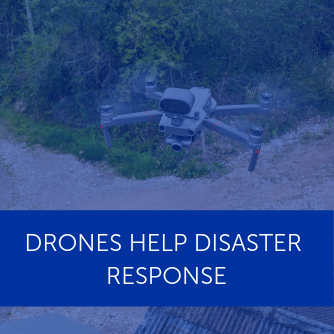
News
Six times drones have helped with disaster response
How drones have helped following major disasters, such as the California Camp Fire, Hurricane Irma, Genoa Bridge Collapse and Liverpool Echo Arena car park fire. ... Read More
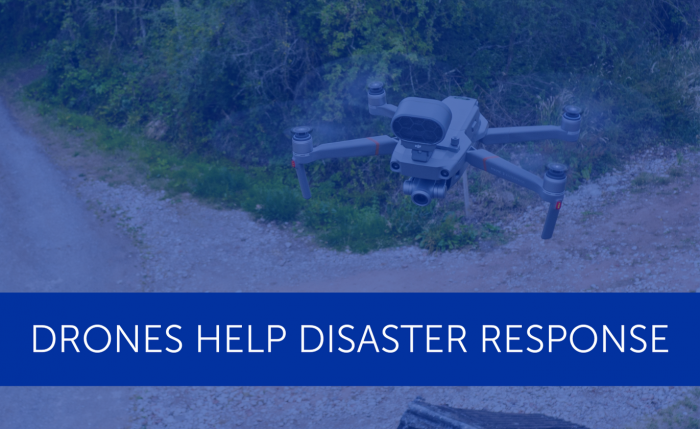
Chaos. Destruction. Carnage. Many lives lost. From huge fires to major earthquakes, natural disasters have left a trail of devastation in their wake.
Amid the havoc and the horror, rescue crews have to spring into action, desperately searching for survivors and analaysing the substantial damage around them.
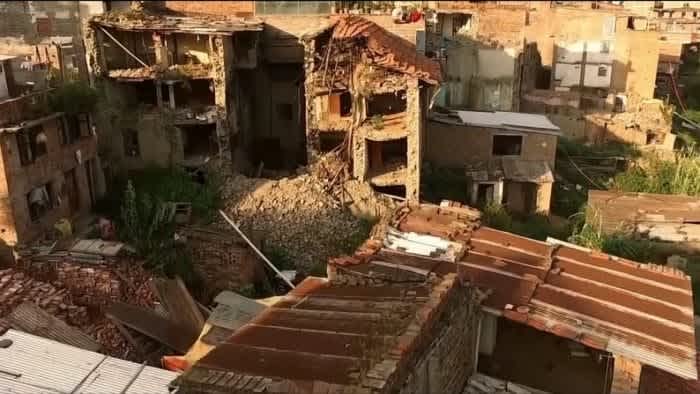
More and more, the emergency services - as well as insurance companies and architects, among others - are using drones to help them with these vital missions in the wake of catastrophe.
Drone mapping not only creates an immediate record of damage after an emergency, but it also helps conceptualise that damage in a meaningful way
UAVs can assist for many reasons, including:
Analysing the extent of damage
Searching for survivors
Creating before/after maps
Rapid situational awareness
In this blog post, Heliguy Insider takes a look at how drones have been used in the aftermath of a number of deadly disasters around the world, including the scorching California Camp Fire, the large-scale deluge of the Balkan floods and the catastrophic Genoa bridge collapse.
1: California Camp Fire
In November last year, California’s deadliest and most destructive fire on record broke out, scorching more than 150,000 acres and raging for more than two weeks.
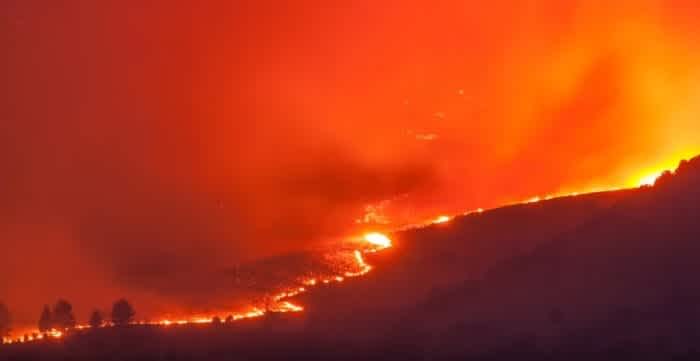
Before containment, the blaze tore through urban areas across Paradise, Chico, Oroville, Magalia and other cities, taking almost 100 lives and leaving many more missing. The inferno destroyed nearly 14,000 homes, 528 commercial structures and close to 4,300 buildings.
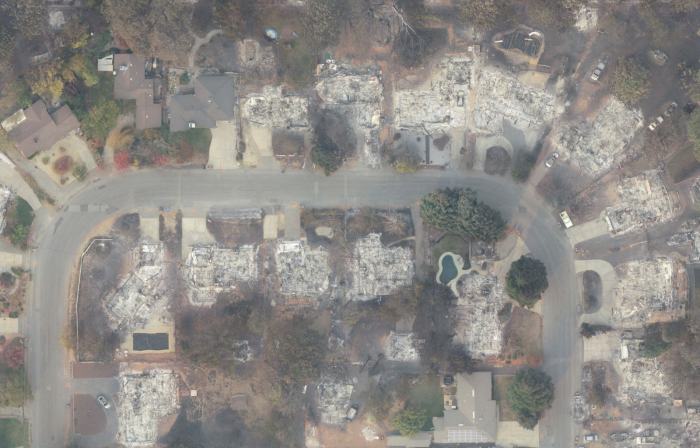
Although an unwanted record, the fire also prompted the largest UAV disaster response to date, with emergency crews using unmanned aircraft to collect aerial insights in the wake of the disaster.
I prepared my Phantom 4 Pro, the Mavic Platinum and the just-released Mavic 2 Enterprise. I also got ready the Matrice 210, with its FLIR/DJI XT2 thermal camera and the high-zoom capable Z30 camera. I also prepared our drone detection solution, AeroScope, to allow us to do airspace mitigation.
Romeo Durscher, Director of Public Safety Integration at DJI
Drone data software package, DroneDeploy, was used to help map the destruction to aid the recovery process in the days leading up to the fire's containment.
Drones footage captured 360° videos and photographs of the devastated neighbourhoods and helped to create 3D maps of the affected areas
Over three days, 16 teams of public safety professionals completed more than 500 drone flights, capturing 70,000+ images of the areas surrounding Paradise and Magalia.
The result: Close to 500GB of drone data which DroneDeploy turned into 26.5 square miles (15,000 acres) of high-res aerial maps to help state agencies and the public assist in the recovery efforts.
Maps and images from the drone give decision-makers situational awareness very rapidly
This data was used to aid search and rescue operations, assist with the planning and response to potential mudslides, issue FEMA (Federal Emergency Management Agency) relief funds and help process insurance claims faster so that wildfire victims can get back on their feet.
The drone view was very helpful and contained a lot of data points, allowing the team to move more effectively and efficiently
The images have since been transformed into maps that are highly accurate, geo-referenced, dated, timestamped and overlaid with street names. These maps were critical tools in the recovery process as neighbourhoods were no longer recognisable.
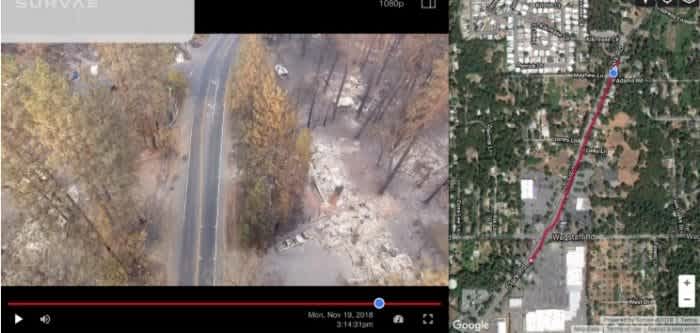
The drones were also used to provide 360° imagery, which allowed for an interactive way to view a scene - being able to look around, zoom in and look in all directions. This type of data, aided by the app Hangar, quickly provides useful situational awareness. The gallery below illustrates a 360° view of one of the many fire-ravaged areas.
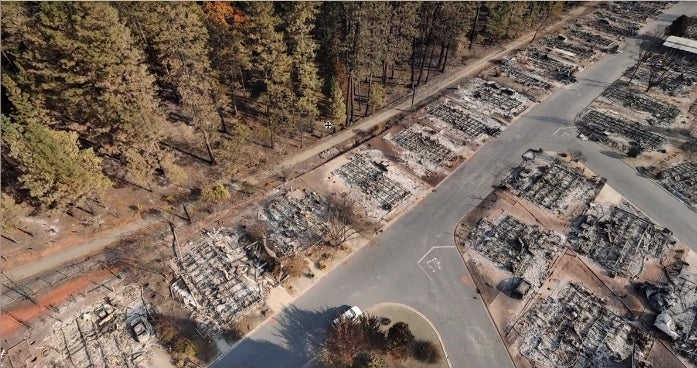
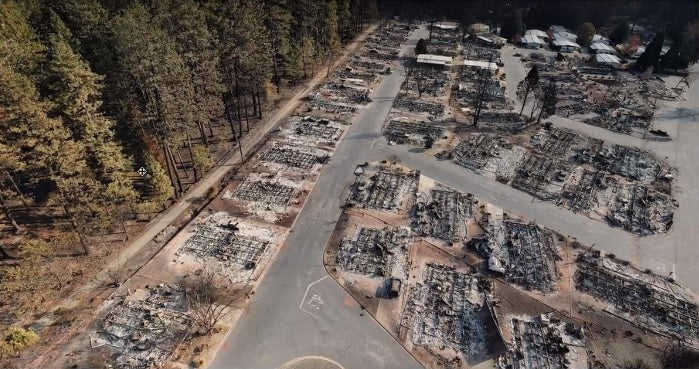
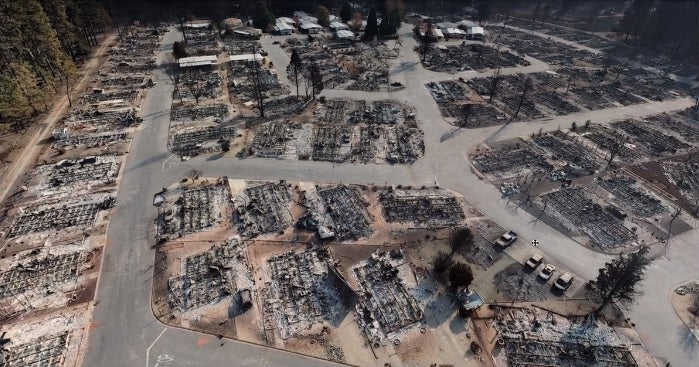
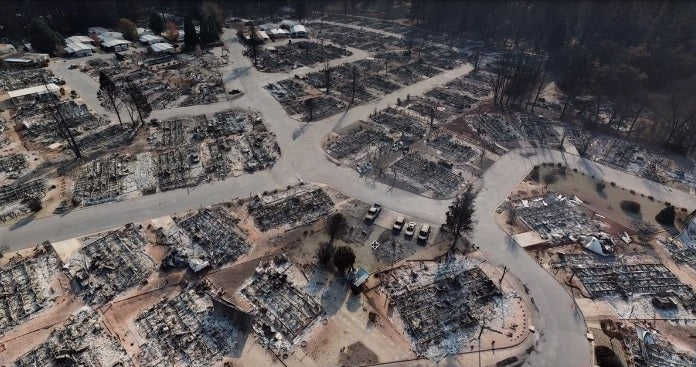

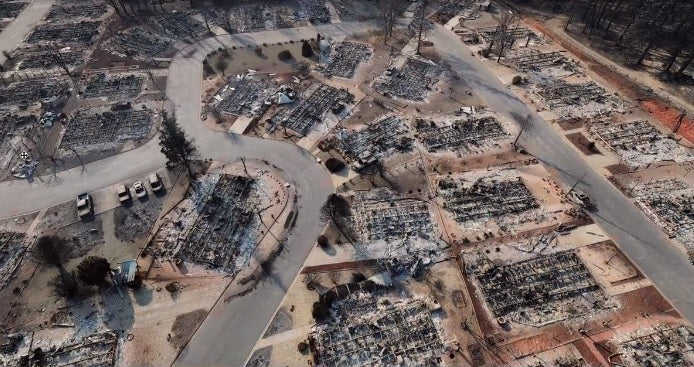
The victims of the fire were also able to put the maps to good use. With entire neighbourhoods mapped, homeowners were able to submit the imagery to insurance providers to process claims immediately - a process that traditionally could take days or weeks. Many used the imagery to gain access to FEMA relief funds for the families affected by the fires.
One of the people called to the disaster was DJI's Director of Public Safety Integration, Romeo Durscher.
Romeo used various pieces of equipment to help with his missions - including DJI AeroScope to provide airspace mitigation and the DJI Mavic 2 Enterprise to capture valuable footage.
Airspace mitigation is highly valuable, not only to detect unauthorised drone flights - as it picks up DJI drone signature and shows telemetry of the drone and also the operator's location - but to also use it as a mini-control tower to track our own drones. It gives decision-makers the ability to see where drone operations are happening
Romeo Durscher
Speaking about the Mavic 2 Enterprise - which comes with three accessories, including a loudspeaker and spotlight - Romeo said: "I decided to utilise the new DJI Mavic 2 Enterprise platform for this mission, as it gives not only longer flight times, but we also had the ability to establish communications with anybody up there through the loud-speaker accessory.
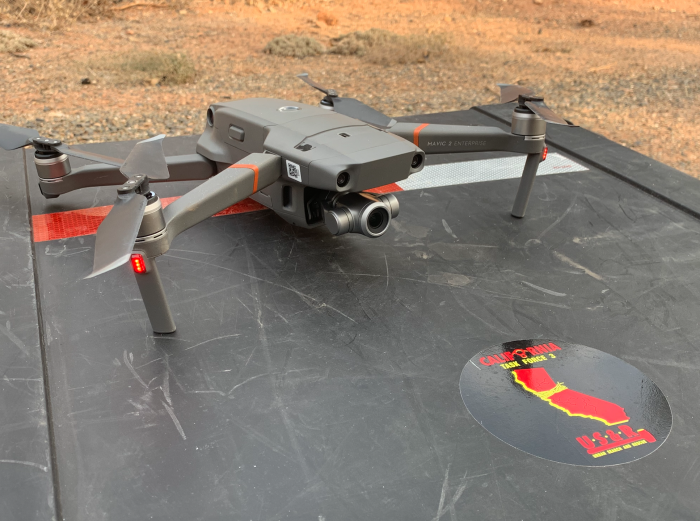
"The biggest advantage is that the GPS location and time stamp is displayed on the image and video. This is very helpful as you have not only the visual of the scene, but also the location and time information right there."
Visit the Heliguy website for more details on DJI AeroScope and Mavic 2 Enterprise.advgbbtn-4d02bed7-aa19-438e-a583-0388d50b44cf { font-size: 18px; color: #fff; background-color: #0232a0; padding: 6px 12px 6px 12px; border-width: 1px; border-color: #0232a0; border-radius: 50px; border-style: solid; } .advgbbtn-4d02bed7-aa19-438e-a583-0388d50b44cf:hover { color: #fff; background-color: #2196f3; box-shadow: 3px 3px 1px 0px #ccc; transition: all 0.2s ease; }
The DJI Pilot app was used while flying the Mavic 2 Enterprise, as the image below shows.
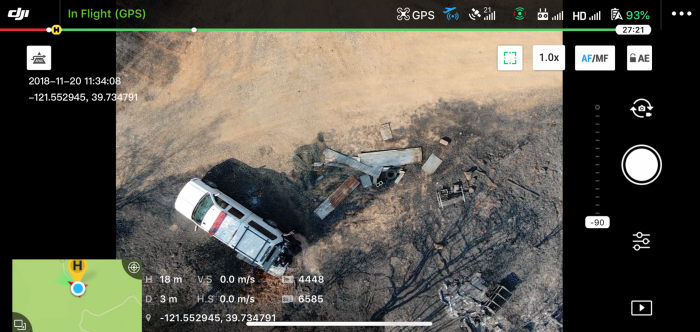
On the top left you can see the time/date, followed by the GPS location, stamp. That is also included on the imagery. Below you can see the actual .jpg file with the time/GPS stamp zoomed in.
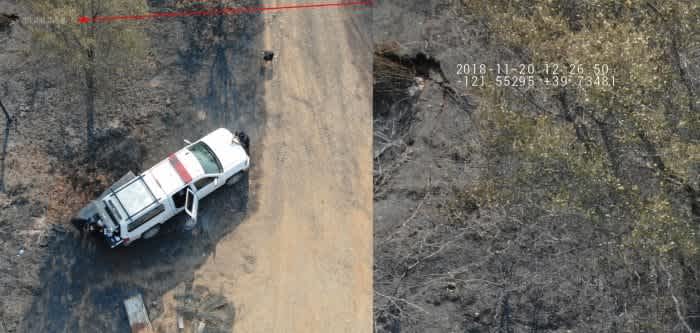
Romeo added: "This was a very effective way of covering a lot of ground and getting very detailed information quickly. Since the Mavic 2 Enterprise also has the ability to zoom in (up to 6x), it was very versatile and we were able to easily identify various objects, such as burned cars, structures and even components within the structures, such as bathtubs."
Click here to read Romeo Durscher's full account of how drones were used in the California fire .advgbbtn-23031eb6-79c4-462f-a309-878343fa5e52 { font-size: 18px; color: #fff; background-color: #0232a0; padding: 6px 12px 6px 12px; border-width: 1px; border-color: #0232a0; border-radius: 50px; border-style: solid; } .advgbbtn-23031eb6-79c4-462f-a309-878343fa5e52:hover { color: #fff; background-color: #2196f3; box-shadow: 3px 3px 1px 0px #ccc; transition: all 0.2s ease; }
2: Hurricane Irma
Drones helped insurance inspectors improve safety, gather better data and jumpstart efforts to rebuild an island hard-hit by disaster, following the deadly Hurricane Irma in the Caribbean in late summer 2017.
Using drone maps to assess structural damage saved huge amounts of time and improved safety
On the island of St Martin - which took a good brunt of the storm - a vast majority of buildings were damaged.
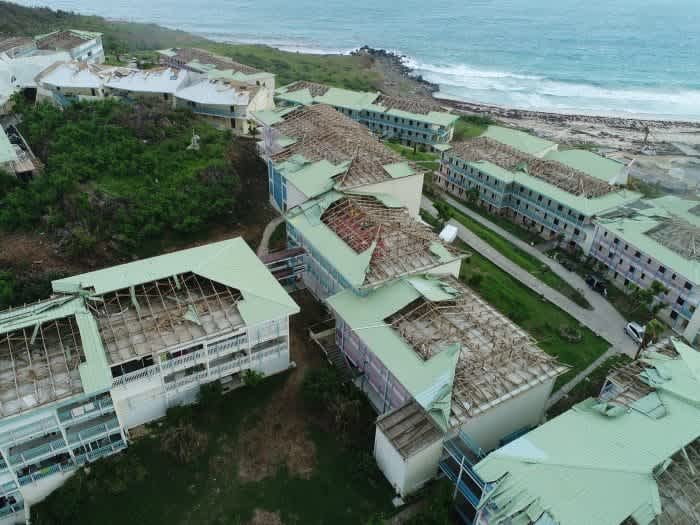
It meant that claim adjusters needed to inspect each structure and estimate the cost of repairs before insurance companies could begin to help the island’s residents get back on their feet.
Over a period of just 10 days, Dronotec mapped 300 buildings in St Martin, leveraging DroneDeploy’s powerful cloud processing engine to map 30 buildings per day and jumpstart efforts to rebuild an island hard-hit by the disaster
From the ground, this would take months. By using drone maps to assess the structural damage caused by the hurricane, insurance inspectors shortened that process to days - all while improving safety, data collection and turnaround time for the claims process.
The team of five drone pilots used DJI Phantom 4 Pro and Mavic Pro drones
The drone maps helped to create a common set of data and a clear record of the damage, helping everyone involved stay organised and on the same page throughout the process.
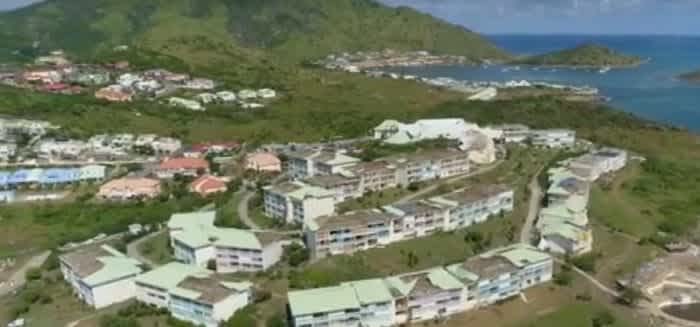
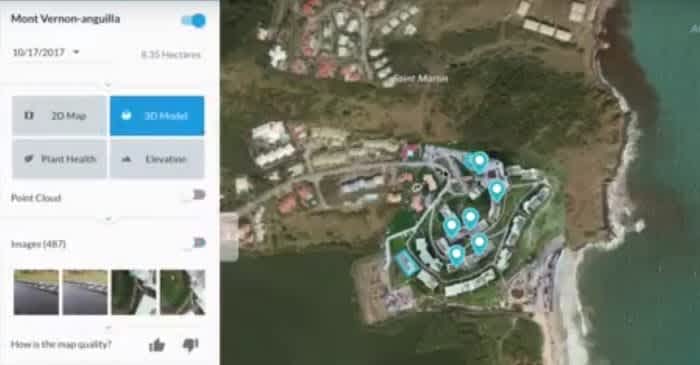
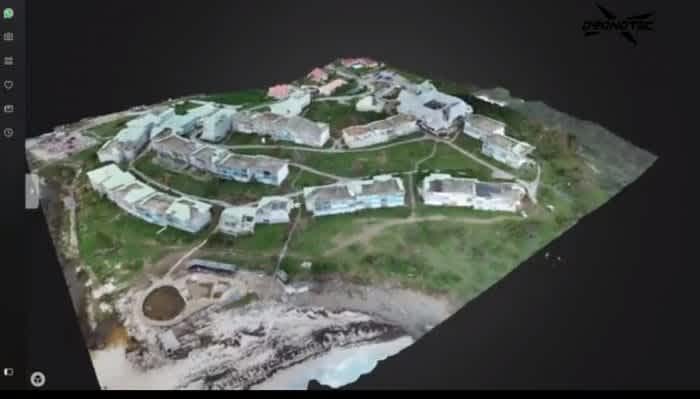
DroneDeploy’s annotations feature allowed insurance companies to make notes on maps and easily share information with those stakeholders. Each map is also geotagged, with a clear record of the exact time, date and location.
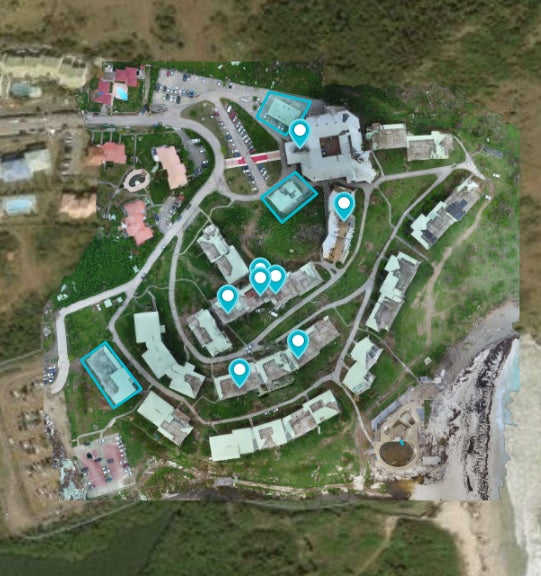
The maps created gave adjusters a far better set of data than they would have gathered through ground inspection. This is crucial because insurance companies must reserve a certain pool of money during the initial claim, to be paid out once a property is rebuilt.
Drones saved time for our network of experts and allowed us to show the damage to people not on site. We think that in the future the use of the drones will become systematic
Jean-Louis Morant, Chief Operating Officer for major insurance company GFA International
DroneDeploy’s built-in measurement tool allows adjusters to estimate the volume of masonry rubble and contractors to determine the amount of material needed to repair a damaged roof, all from a safe distance.
In cases where a structure is completely wiped away by the hurricane, adjusters can compare pre-storm satellite imagery with post-storm drone maps to verify the existence and location of the old structure.
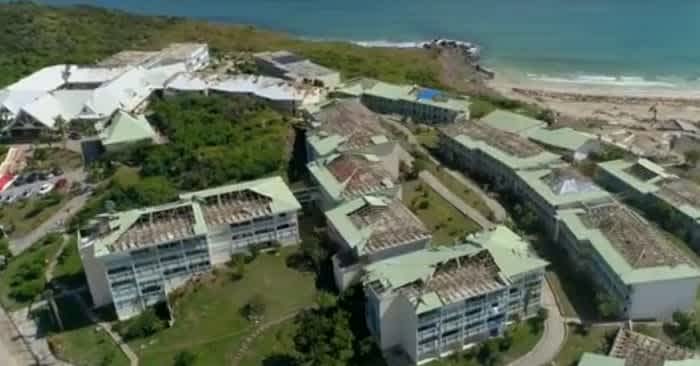
3: Mexico City Earthquake
When a 7.1 magnitude earthquake hit central Mexico in the autumn of 2017, much of Mexico City was left in chaos.
DroneSky, a drone mapping company based in Mexico City, stepped in.
DroneSky used a DJI Phantom 4 to map the entire Xochimilco district. It took just eight flights to map the 98.6-acre neighbourhood, including specific buildings that had suffered the most damage
Using DroneDeploy, the company mapped 98 acres in one of the hardest hit and most marginalised districts of the city, then teamed up with a group of architectural students to create a plan for a total regeneration of public space in the district.

Initially, drones helped to inspect the scale of the damage - giving a superior view to assessing the destruction from the ground.
Santiago Fuentes and Pablo Germenos, co-founders of DroneSky, knew they could use drones to help create a clear picture of the damage.
In times of emergency, you need an emergency response to all of the chaos. Drones allow us to have an immediate response and record of what happened, and in a fast and accurate way.
Santiago Fuentes, co-founder and CEO of DroneSky
Drone mapping not only creates an immediate record of damage after an emergency, but it also helps conceptualise that damage in a meaningful way.
Architecture students were able to use drone maps to redesign major buildings that had been completely destroyed
Just two days after the earthquake, DroneSky used a DJI Phantom 4 to map the entire Xochimilco district. In a total of eight flights, they created a map of the entire 98.6-acre neighbourhood and individual maps of specific buildings that had suffered the most damage.
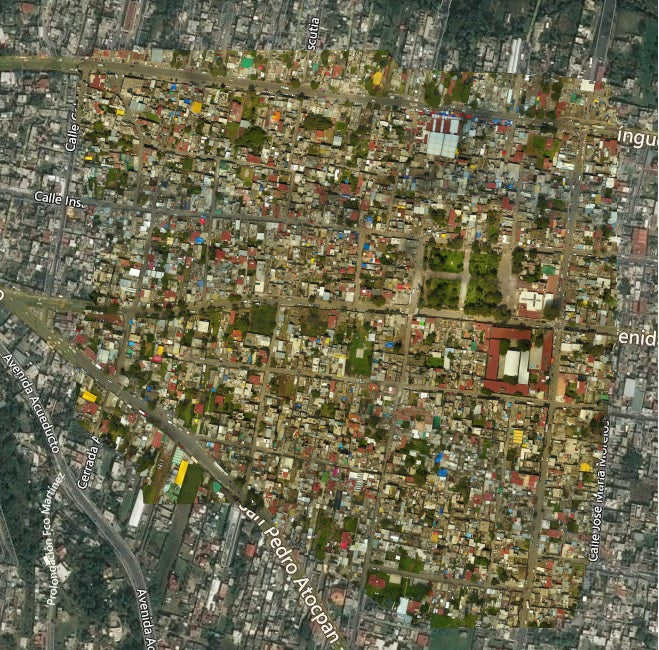
Using drone data came in useful in other ways - such as helping to rebuild the stricken city.
Purchase a DJI Phantom 4 from Heliguy.advgbbtn-4755d8b7-1d2f-497e-b419-5eb11053be72 { font-size: 18px; color: #fff; background-color: #0232a0; padding: 6px 12px 6px 12px; border-width: 1px; border-color: #0232a0; border-radius: 50px; border-style: solid; } .advgbbtn-4755d8b7-1d2f-497e-b419-5eb11053be72:hover { color: #fff; background-color: #2196f3; box-shadow: 3px 3px 1px 0px #ccc; transition: all 0.2s ease; }
DroneSky gave its UAV maps to a group of architecture students who formed the Rebuilding Mexico Group. Using the drone-generated maps and 3D models as a baseline, the group set out to redesign eight major buildings that had been completely destroyed.
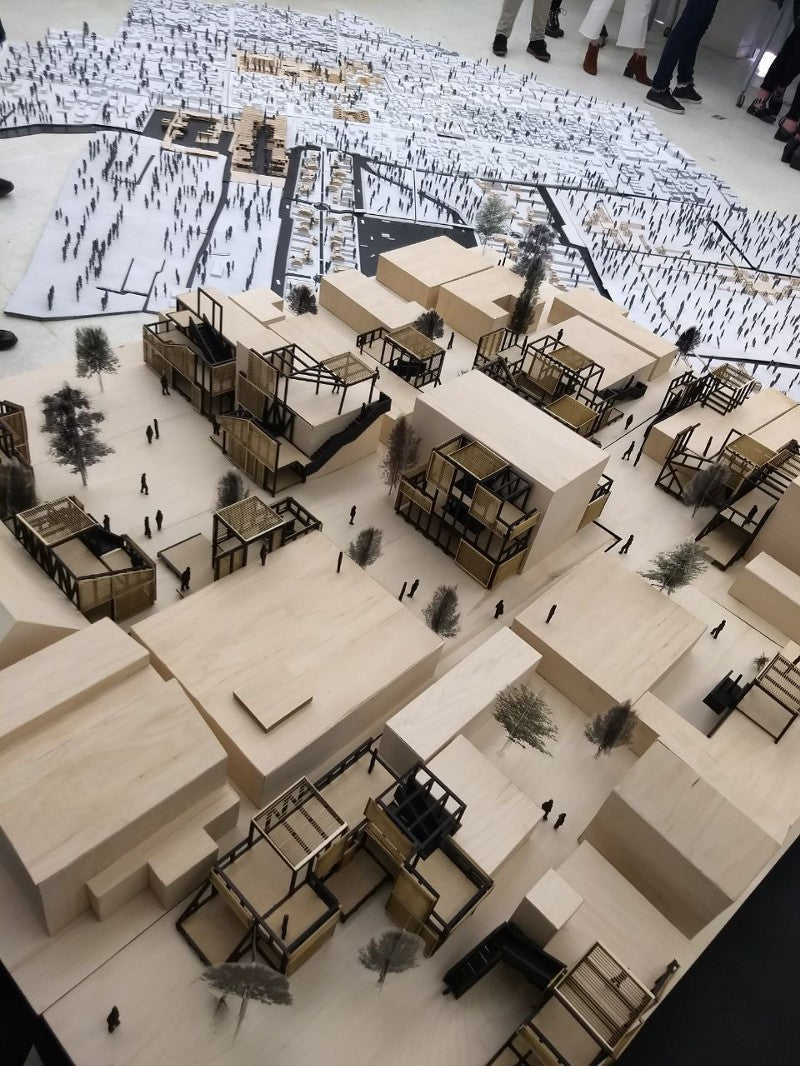
Exhibition of models produced by the Rebuilding Mexico Group. Photo credit: Architect Students of Universidad Iberoamericana
4: Genoa Bridge Collapse
Drones played a vital role following the collapse of the Morandi Bridge, in Genoa, Italy, in August 2018.
Forty-three people were killed in the disaster, when a 220metre (656ft) section suddenly plunged 45metres, along with dozens of vehicles.
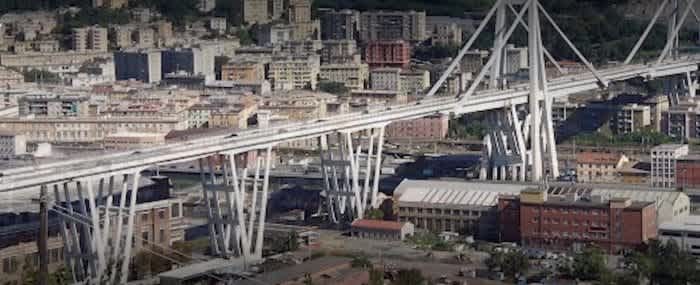
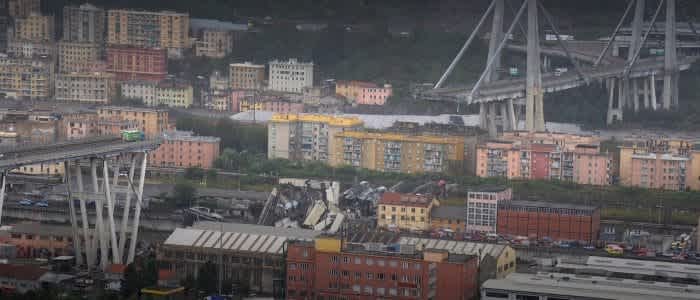
Amid the carnage, firefighters turned to UAVs to help look for survivors from the debris.
Firefighters also used drones to survey the damage and to reveal the extent of the collapse.
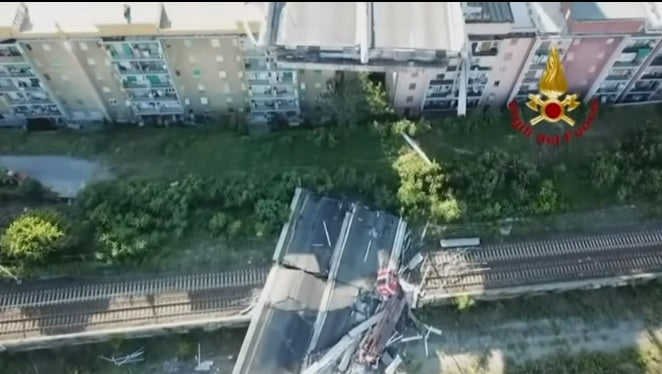
5: Liverpool Echo Arena Multi-storey Car Park Fire
A severe fire broke out at the Liverpool Echo Arena Multi-storey Car Park on New Year's Eve 2017.
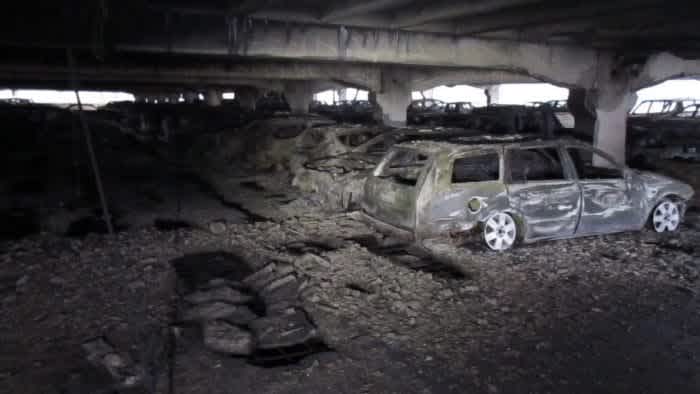
The levels of the damage were unknown and the integrity of the structure presented a risk to the public.
However, it was far too hazardous for a person to enter the car park to obtain this data. So a drone was needed.
Collected data from the drone contributed to a forensic report, structural integrity assessment and decision-making as to keep or demolish the building
PCF Surveys turned to the Flyability Elios - the first collision-tolerant drone which comes with a carbon fibre protective frame and is ideal for the inspection and exploration of the most inaccessible places.
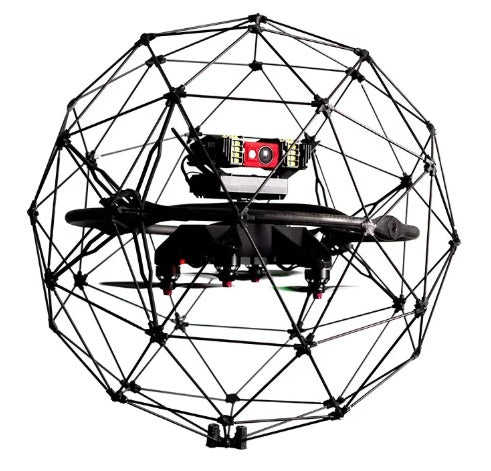
It proved to be the ideal solution. The cage allowed it to land in key areas, while the on-board lighting and 360° camera rotation allowed PCF Surveys to obtain a full view of the inspection area.
Using the Flyability Elios meant that data could be collected, despite the fact that the fire-damaged structure was causing limitations. It also ensured that there was no risk to human life throughout the mission
The data obtained by PCF Surveys contributed to a forensic report by Merseyside Fire and Rescue. Without this data the report would be been limited by the physical limitations the structure imposed.
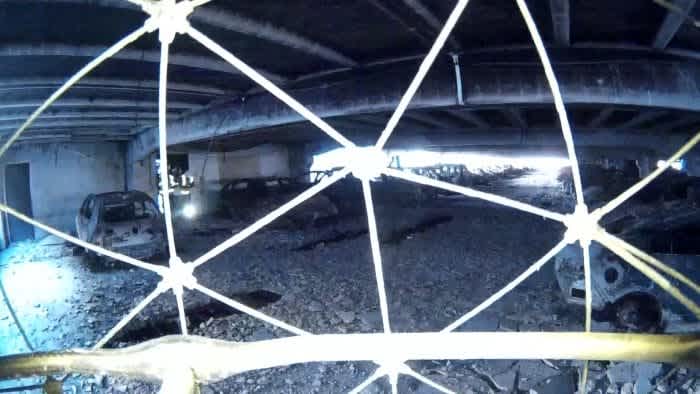
The data was also used by Structural Engineers to assess the structure's integrity and draw preliminary conclusions. Again, these early conclusions would not have been drawn without this data.
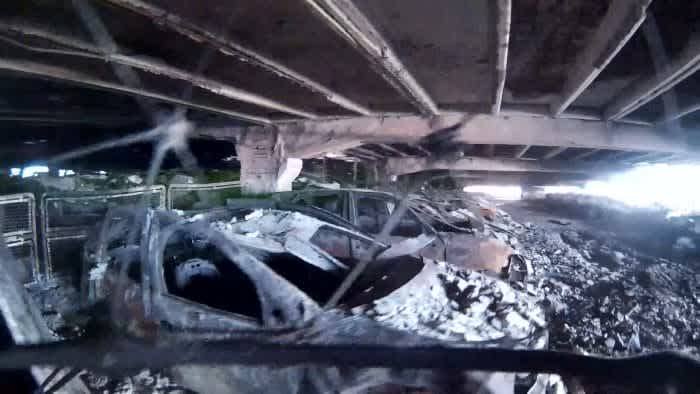
The data was also used by insurance companies and Liverpool City Council and largely contributed towards critical decision-making on whether to demolish or repair the structure. Work started towards the end of last year to pull it down.
Inquire about the Flyability Elios.advgbbtn-688ff51d-b25f-49cb-ad34-fc2c0f896ef4 { font-size: 18px; color: #fff; background-color: #0232a0; padding: 6px 12px 6px 12px; border-width: 1px; border-color: #0232a0; border-radius: 50px; border-style: solid; } .advgbbtn-688ff51d-b25f-49cb-ad34-fc2c0f896ef4:hover { color: #fff; background-color: #2196f3; box-shadow: 3px 3px 1px 0px #ccc; transition: all 0.2s ease; }
6: Balkans Flooding
Using unmanned aircraft for help with disaster response goes back a good few years. In 2014, UAVs were used in the aftermath of serious flooding in the Balkans.
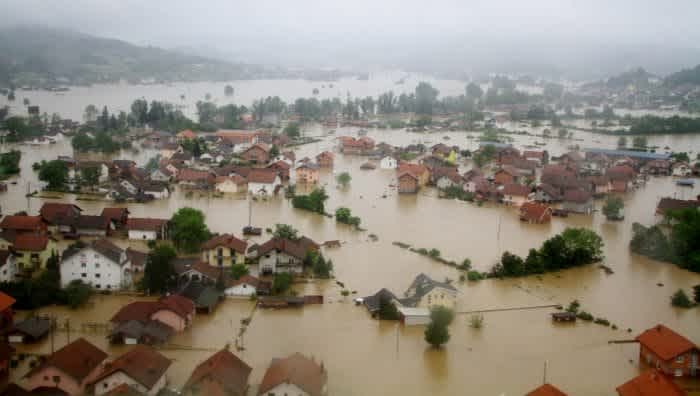
Photo by Kemal Zorlak/Anadolu Agency
Pilots from the Humanitarian UAV Network used drones to carry out post-disaster needs assessments, which included identifying the location of mines displaced due to the major flooding and mudslides.
As it turned out, some mines were displaced as far as 23km. When the flood waters subsided and villagers returned, most were unaware of this imminent danger.
Imagery from unmanned aircraft was used to support damage and needs assessments and were used to help create models of landslide areas
During the flights, imagery was captured that could be used to identify displaced land mines and to analyse the effects of landslides on other explosive remnants of war.
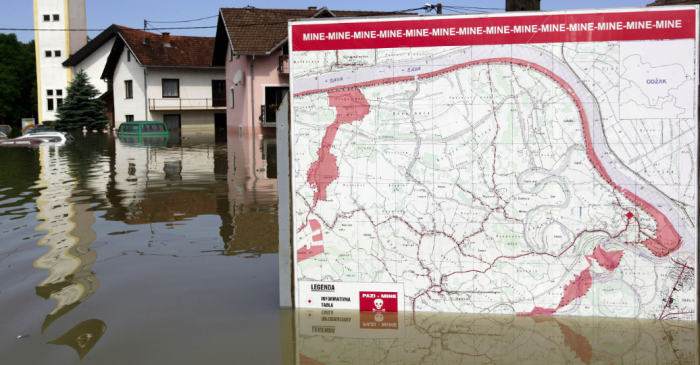
The team created 3D maps from the imagery and used geo-statistical modelling to try to determine in which direction land mines may have been displaced. The imagery also provided valuable information on dyke-breaches and other types of infrastructure damage.
Meanwhile, a fixed-wing aircraft was used in five locations to support damage and needs assessments in close collaboration with the World Bank and the UN. Some of the resulting images and models of landslide areas are depicted below, courtesy of the DG Joint Research Centre.
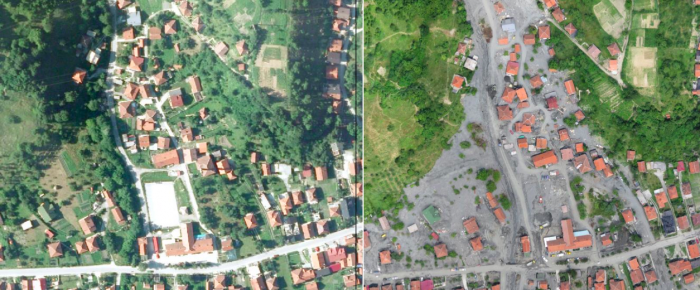
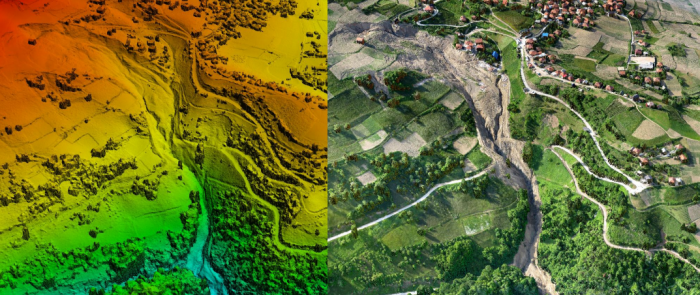
Conclusion
From providing rapid situational awareness to vital mapping and image data, drones are playing an increasingly important role in disaster response.
These eyes from the sky are helping rescue crews by providing quick information and offering a unique perspective - all while keeping the emergency services away from danger.
Drone technology has certainly been something of a game-changer when it comes to reacting to a major disaster.
Click here to visit the Heliguy website to find out more about the drones mentioned in this blog post .advgbbtn-a5178d75-fcce-43ee-8bc8-590e7f1cf8d0 { font-size: 18px; color: #fff; background-color: #0232a0; padding: 6px 12px 6px 12px; border-width: 1px; border-color: #0232a0; border-radius: 50px; border-style: solid; } .advgbbtn-a5178d75-fcce-43ee-8bc8-590e7f1cf8d0:hover { color: #fff; background-color: #2196f3; box-shadow: 3px 3px 1px 0px #ccc; transition: all 0.2s ease; }
